Pathway-specific inhibition of critical projections from the mediodorsal thalamus to the frontal cortex controls kindled seizures
- PMID: 35537572
- PMCID: PMC9361177
- DOI: 10.1016/j.pneurobio.2022.102286
Pathway-specific inhibition of critical projections from the mediodorsal thalamus to the frontal cortex controls kindled seizures
Abstract
There is a large unmet need for improved treatment for temporal lobe epilepsy (TLE); circuit-specific manipulation that disrupts the initiation and propagation of seizures is promising in this regard. The midline thalamus, including the mediodorsal nucleus (MD) is a critical distributor of seizure activity, but its afferent and efferent pathways that mediate seizure activity are unknown. Here, we used chemogenetics to silence input and output projections of the MD to discrete regions of the frontal cortex in the kindling model of TLE in rats. Chemogenetic inhibition of the projection from the amygdala to the MD abolished seizures, an effect that was replicated using optogenetic inhibition. Chemogenetic inhibition of projections from the MD to the prelimbic cortex likewise abolished seizures. By contrast, inhibition of projections from the MD to other frontal regions produced partial (orbitofrontal cortex, infralimbic cortex) or no (cingulate, insular cortex) attenuation of behavioral or electrographic seizure activity. These results highlight the particular importance of projections from MD to prelimbic cortex in the propagation of amygdala-kindled seizures.
Keywords: Amygdala; Chemogenetics; Deep brain stimulation; Epilepsy; Frontal cortex; Hippocampus; Kindling; Optogenetics; Temporal lobe epilepsy; Thalamus.
Copyright © 2022 Elsevier Ltd. All rights reserved.
Figures

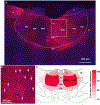

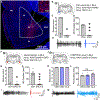

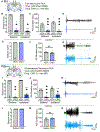
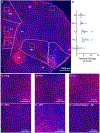
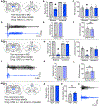
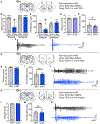
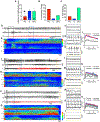

Similar articles
-
Chemogenetic silencing of the midline and intralaminar thalamus blocks amygdala-kindled seizures.Exp Neurol. 2016 Sep;283(Pt A):404-12. doi: 10.1016/j.expneurol.2016.07.003. Epub 2016 Jul 9. Exp Neurol. 2016. PMID: 27404844 Free PMC article.
-
Neocortical and thalamic spread of amygdala kindled seizures.Epilepsia. 2007 Feb;48(2):254-62. doi: 10.1111/j.1528-1167.2006.00934.x. Epilepsia. 2007. PMID: 17295618
-
The role of the piriform cortex in kindling.Prog Neurobiol. 1996 Dec;50(5-6):427-81. doi: 10.1016/s0301-0082(96)00036-6. Prog Neurobiol. 1996. PMID: 9015822 Review.
-
Cortical spreading depression reversibly disrupts convulsive motor seizure expression in amygdala-kindled rats.Neuroscience. 1999;91(1):305-13. doi: 10.1016/s0306-4522(98)00656-3. Neuroscience. 1999. PMID: 10336080
-
[Thalamus and Emotion].Brain Nerve. 2015 Dec;67(12):1499-508. doi: 10.11477/mf.1416200328. Brain Nerve. 2015. PMID: 26618764 Review. Japanese.
Cited by
-
Unraveling the Neural Circuits: Techniques, Opportunities and Challenges in Epilepsy Research.Cell Mol Neurobiol. 2024 Mar 6;44(1):27. doi: 10.1007/s10571-024-01458-5. Cell Mol Neurobiol. 2024. PMID: 38443733 Free PMC article. Review.
-
Medial prefrontal cortex to nucleus reuniens circuit is critical for performance in an operant delayed nonmatch to position task.Neurobiol Learn Mem. 2025 Jan;217:108007. doi: 10.1016/j.nlm.2024.108007. Epub 2024 Nov 23. Neurobiol Learn Mem. 2025. PMID: 39586458
-
Seizing Control of Neuronal Activity: Chemogenetic Applications in Epilepsy.Epilepsy Curr. 2022 Sep 19;22(5):303-308. doi: 10.1177/15357597221120348. eCollection 2022 Sep-Oct. Epilepsy Curr. 2022. PMID: 36285203 Free PMC article. Review.
-
A review of cell-type specific circuit mechanisms underlying epilepsy.Acta Epileptol. 2024 Jun 1;6(1):18. doi: 10.1186/s42494-024-00159-2. Acta Epileptol. 2024. PMID: 40217549 Free PMC article. Review.
References
-
- Alcaraz F, Marchand AR, Courtand G, Coutureau E, & Wolff M (2016). Parallel inputs from the mediodorsal thalamus to the prefrontal cortex in the rat. The European Journal of Neuroscience, 44(3), 1972–1986. - PubMed
-
- Arikan R, Blake NMJ, Erinjeri JP, Woolsey TA, Giraud L, & Highstein SM (2002). A method to measure the effective spread of focally injected muscimol into the central nervous system with electrophysiology and light microscopy. Journal of Neuroscience Methods, 118(1), 51–57. - PubMed
Publication types
MeSH terms
Grants and funding
LinkOut - more resources
Full Text Sources

